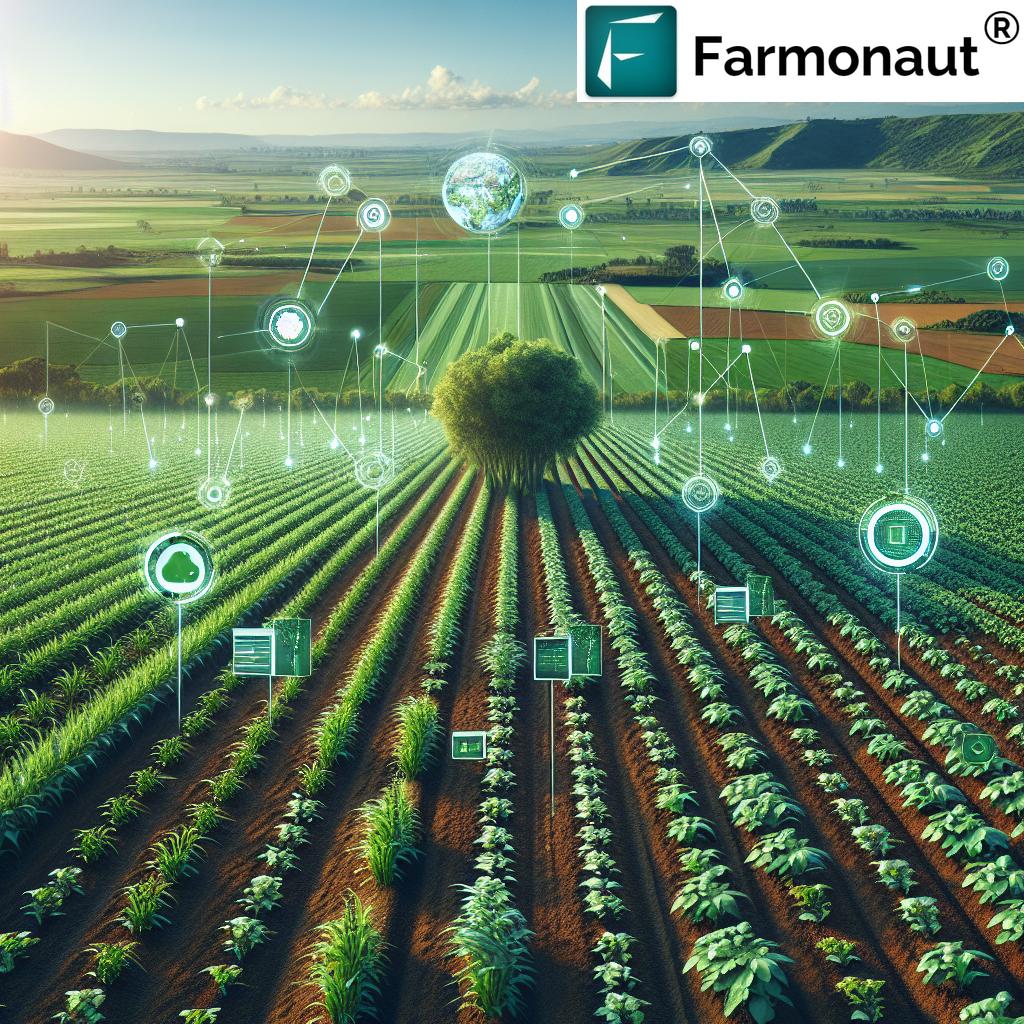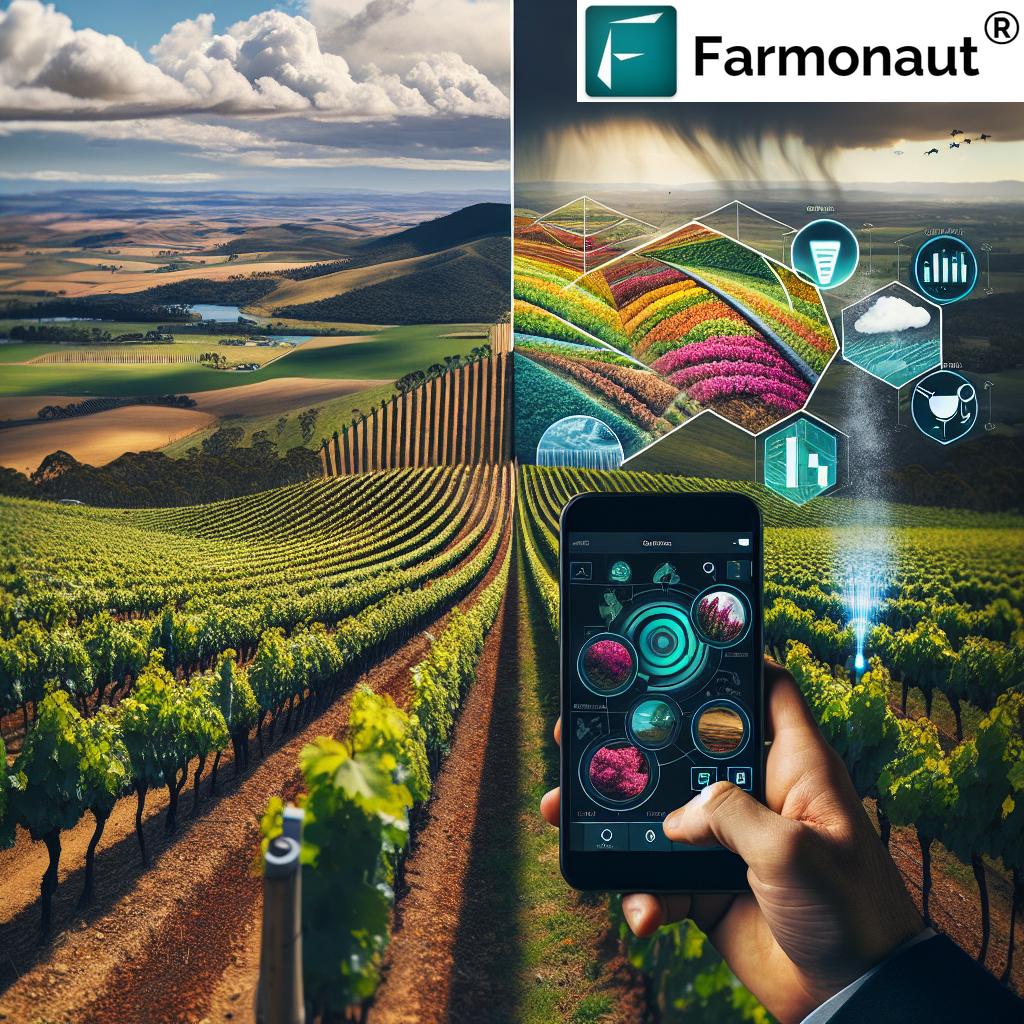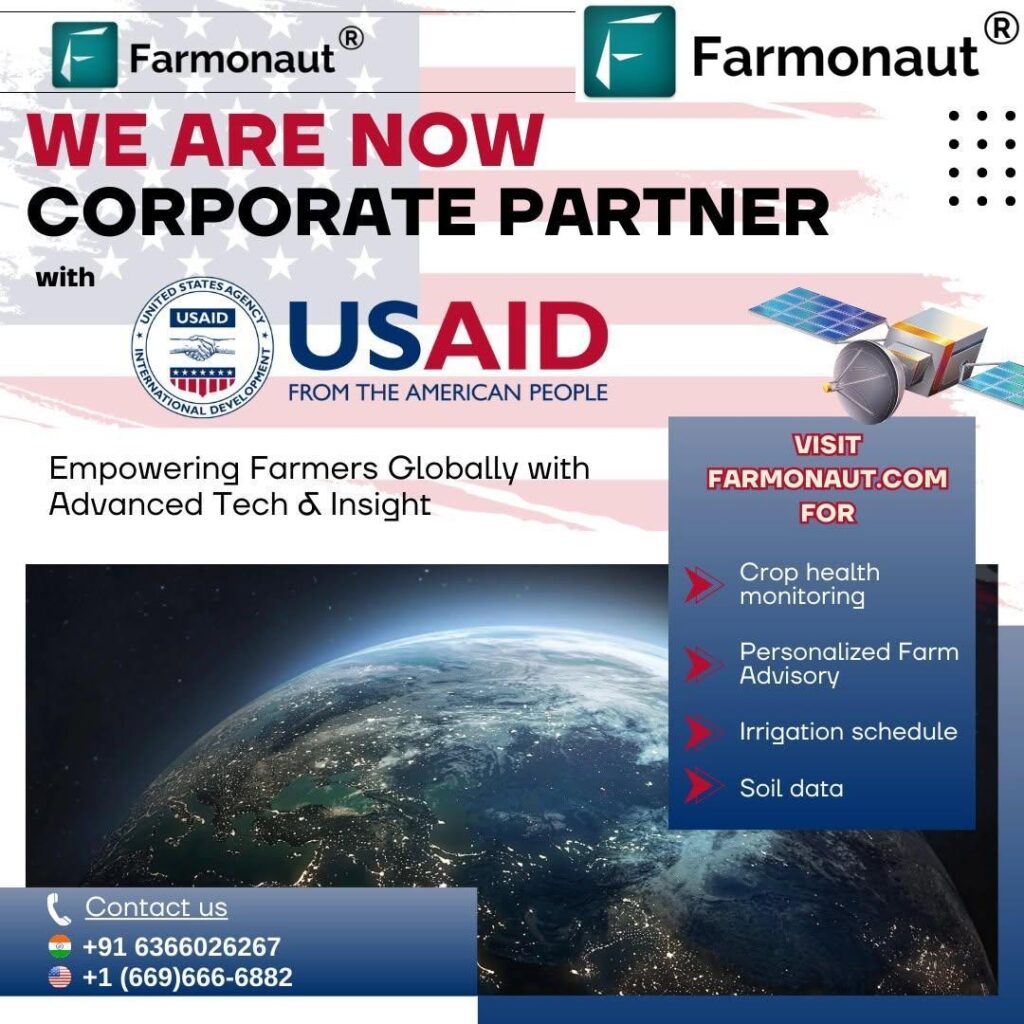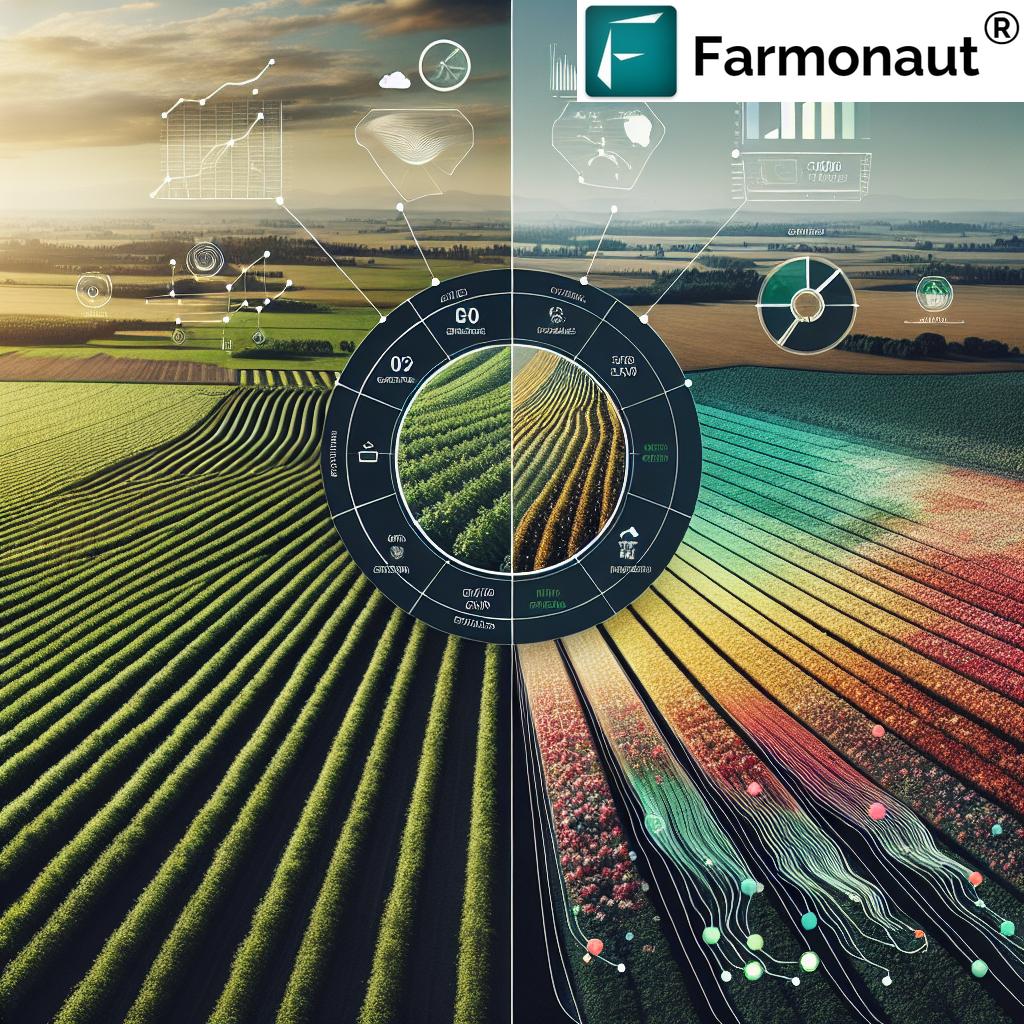AI Biodiversity & Farm Tech: 7 Absolute Pest Solutions Revolutionizing Agriculture in 2025
“AI-powered pest control reduces chemical pesticide use by up to 60%, supporting sustainable agriculture and biodiversity preservation.”
The Evolution: AI Biodiversity Solutions & Farm Tech in 2025
The convergence of artificial intelligence (AI) with modern agricultural systems marks a paradigm shift in how we address biodiversity, crop management, and absolute pest control. By 2025, AI biodiversity solutions and farm tech solutions are transforming the farming landscape globally. Today’s farmers, agricultural managers, and environmentalists face mounting concerns over sustainability, ecological balance, and food security. These are driven by biodiversity loss, overuse of pesticides, and the existential climate crisis.
With advanced technologies—from satellite imagery and machine learning algorithms to AI-enhanced drones and sensors—we are witnessing unprecedented innovation in monitoring, predictive models, and targeted pest management. These innovations offer the tools to optimize crop yields, address environmental challenges, and enhance ecosystem health.
Learn how satellite and AI technologies offer real-time, actionable insights for agriculture via the Farmonaut platform.
The Critical Role of Biodiversity in Modern Agriculture
Biodiversity is the backbone of resilient ecosystems, directly influencing key agricultural services like pollination, natural pest regulation, and soil fertility. A loss in habitat, overuse of chemicals, and relentless monoculture cropping threaten diversity, leading to cascading ecosystem health challenges and diminished food security.
Modern farming in 2025 embraces AI biodiversity solutions to monitor plant and animal species, detect early signs of stress, and track population dynamics—all with remarkable accuracy. For instance, bioacoustic sensors now deployed around forest edges and farmlands analyze bird and insect calls in real-time, painting a granular picture of ecosystem balance.
- Advanced sensor networks provide data on cropping patterns and species diversity, empowering farmers and managers to make informed decisions.
- AI models predict the best crop diversification or agroforestry strategies for long-term resilience against climate change.
- Targeted restoration efforts can be planned, such as reintroducing native species or modifying land use for optimal biodiversity gains.
Enhanced monitoring is driving measurable changes in ecosystem health, with an increasing number of agricultural practices aligned to support both productivity and sustainability goals.
Discover the importance of soil health and climate-smart agriculture leveraging AI and satellite insights for a regenerative future.
AI Biodiversity Solutions: An Integrated Approach
- AI-driven conservation monitoring now supports detailed habitat tracking and intervention planning.
- Combining satellite imagery with machine learning identifies patterns of loss or stress across landscapes swiftly.
- Population modeling assists managers in allocating resources for ecosystem restoration and resilience.
- Integration with decision support platforms means that on-ground actions are always based on real-time data.
These AI biodiversity solutions empower farmers and land managers with essential tools to promote ecological balance while pursuing sustainable crop yields.
Farm Tech Solutions: Precision Agriculture for Sustainable Crop Management
AI-enhanced farm tech solutions play a central role in the transformation of modern agriculture. By integrating intelligent sensors, satellite imagery, and AI analytics, these platforms ensure every hectare of farmland receives the exact care it requires for optimized yields and sustainable resource use.
- Soil Health Monitoring: Real-time sensors measure moisture, nutrient levels, and pH conditions, providing tailored fertilization recommendations.
- AI-based Planting & Irrigation: Machine learning models determine the most effective patterns for planting and watering, reducing waste and overuse of inputs.
- Drone-assisted Field Scouting: Drones capture high-resolution imagery to detect early signs of crop stress, pest outbreaks, or nutrient deficiencies.
- Automated Harvesting & Crop Rotation Planning: AI analytics predict ideal harvest times and recommend crop rotations to improve soil fertility and break pest cycles.
By including biodiversity indicators like beneficial insect populations in their models, these farm tech solutions help align productivity goals with environmental objectives.
Experience AI-powered advisory systems that provide hyper-local, actionable strategies for smart and sustainable farming in 2025.
Benefits of AI-Driven Farm Tech Solutions
- Precision management reduces unnecessary chemical use, safeguarding biodiversity and local ecosystem health.
- Prediction capabilities allow for early intervention, improving food security and minimizing losses.
- Smart platforms aggregate field data for better decision-making, enabling transparent resource management.
- Robust adaptation to climate change by dynamically responding to environmental signals and supporting long-term resilience.
Modern field scouting with AI empowers farmers to detect stress and optimize productivity while promoting sustainable management.
Absolute Pest Solutions: AI at the Forefront of Pest Management
Among the most significant advancements in 2025, absolute pest solutions emerge as eco-friendly, ultra-precise answers to one of agriculture’s oldest challenges. Conventional pesticide methods impact not only pest species but also beneficial insects—leading to increased resistance, loss of biodiversity, and soil and water contamination.
AI-driven solutions address these issues with a revolutionary approach:
- Real-time pest detection: Integrating drone and satellite imagery with in-field sensors enables early pest detection at pinpoint locations.
- Automated pest identification & modeling: Machine learning algorithms classify species and forecast infestation patterns.
- Targeted biological interventions: AI platforms suggest the optimal use of biocontrol agents—natural predators, parasitoids, or pheromone traps—instead of blanket spraying.
- Drones for targeted delivery: Drones release beneficial species or deploy eco-safe pesticides only where absolutely necessary, reducing collateral damage.
The result is a dramatic reduction in chemical input, preservation of non-target species, and superior crop health.
“Over 70% of farms using AI biodiversity solutions report increased crop yields and improved ecosystem balance.”
See how AI-driven pest detection works, minimizing pesticide use and enhancing ecological balance in cutting-edge farms.
Why “Absolute” Pest Management Matters
- Eco-safe interventions lead to resilient ecosystems, supporting long-term food production and environmental security.
- Data-driven intelligence enables farmers to optimize pest control without compromising biodiversity.
- AI integration empowers smarter thresholds and treatment timing, aligning agricultural practices with conservation goals.
Comparative Table: 7 AI Biodiversity & Farm Tech Absolute Pest Solutions
| Solution Name | AI Technology Used | Estimated Pest Reduction (%) | Biodiversity Benefit | Sustainability Score (1-10) |
Example Application |
|---|---|---|---|---|---|
| AI-Powered Pest Detection & Early Warning | Satellite Imagery + ML Algorithms | 35-60% | Minimal non-target species impact; improves ecosystem monitoring | 9 | Detects outbreaks in wheat, maize, and soy; timely intervention |
| Bioacoustic Sensor Networks | Bioacoustic AI Analytics | 20-40% | Protects pollinators; enables precision pest control | 8 | Tracks insect & bird population stress around rice paddies |
| Drone-Assisted Targeted Biocontrol | AI-Guided Drone Swarms | 45-65% | Boosts beneficial predator populations | 10 | Releases ladybird beetles to combat aphids in vegetable farms |
| AI-Driven Precision Spraying | Real-time Sensor Data + ML | 50-70% | Reduces pesticide drift and beneficial insect mortality | 9 | Vineyard targeted fungicide use to prevent mildew |
| Pheromone-Based Intelligent Traps | AI-Optimized Release Logic | 30-50% | Non-toxic; disrupts pest reproduction cycles | 8 | Codling moth control in apple orchards |
| Predictive Crop Vulnerability Modeling | Climate Data + Deep Learning | 10-30% | Prevents overuse of pesticides during low-risk periods | 9 | Soybean rust mitigation using weather-linked risk models |
| Smart Biological Pesticides Deployment | AI-Driven Formulation Matching | 40-60% | Supports native species & soil microbe health | 10 | Spinach peptide bio-pesticides against citrus pests |
Table: Comparative analysis of AI-driven absolute pest solutions—showing their impact on sustainability, biodiversity, and crop yield.
7 Absolute Pest Solutions in Detail: Innovations Transforming Farms
1. AI-Powered Pest Detection & Early Warning
Advanced AI solution platforms now fuse satellite imagery, drone feeds, and real-time sensor networks to detect pest outbreaks early. Machine learning algorithms analyze vegetation stress, soil anomalies, and visible pest clusters. These systems deliver actionable alerts to farmers through their devices or dashboards.
- Impact: Reduces unnecessary chemical applications; maximizes productivity and supports ecosystem balance.
- Farmonaut Example: Our platform combines AI & satellite-based data for near-real-time pest and crop stress monitoring, aiding in early decision-making.
2. Bioacoustic Sensor Networks for Biodiversity & Pest Monitoring
Bioacoustic sensors deployed through farmlands and forest edges record insect and bird calls. AI analytics then assess population dynamics and patterns, highlighting both beneficial and harmful changes.
- Biodiversity Benefit: Easily identifies beneficial pollinator declines versus pest booms—enabling minimally invasive interventions.
- Farmonaut Integration: Our platform’s remote monitoring enables synchronized biodiversity and pest analytics from field to device.
3. Drone-Assisted Targeted Biocontrol Agents
Drones equipped with AI-guided release mechanisms place predators (like lady beetles or parasitoid wasps) directly onto pest hotspots. This ultra-targeted approach enables rapid, area-specific mitigation without substantial ecosystem disturbance or pesticide run-off.
- Use Case: Drones loaded with beneficial insects for cluster aphid or mealybug control in vegetable and fruit farms.
- Sustainability: Elevates local biodiversity by supporting predator-prey balance naturally.
Unveil the future—drones, guided by AI, delivering timely pest interventions and supporting farm biodiversity with precision.
4. AI-Driven Precision Spraying Platforms
Smart sprayers, fitted with real-time sensors and AI-powered detection algorithms, distinguish between infested and healthy plants. They apply biopesticides or targeted chemicals only where needed—avoiding overuse and drastically limiting ecosystem impact.
- Example: Vineyards combatting powdery mildew while preserving pollinators and natural predators.
- Benefit: Measurable reductions in input costs, chemical residues, and non-target species harm.
5. Pheromone-Based Intelligent Traps
AI platforms now optimize the distribution, timing, and recharging of pheromone traps for pests like codling moths or corn borers. AI logic ensures these traps disrupt pest mating cycles—preventing future generations while avoiding collateral species impact.
- Benefit: Provides non-toxic, residue-free pest control integrated into precision farming regimes.
- Example Application: Apple orchards applying pheromone disruption for codling moth management.
Observe how organic and AI-optimized approaches make pest control safer for food, farmers, and biodiversity.
6. Predictive Crop Vulnerability Modeling
By merging climate and crop data with deep learning models, AI identifies when and where fields are most vulnerable to pest attacks. Inputs are only deployed if predicted risk justifies intervention, avoiding unnecessary treatments during low-pressure periods.
- Example: AI-driven models warn about soybean rust risk, allowing timed fungicide applications and reducing pesticide footprint.
- Advantage: Fewer “calendar-based” sprays, more dynamic, data-backed management.
7. Smart Biological Pesticide Deployment
AI formulation matching analyzes soil health, crop type, prevailing pest populations, and biodiversity signals to recommend biological pesticides—for instance, spinach peptide bio-pesticides that combat insect pests without harming soil microbes or pollinators.
- Impact: Maintains native species health; increases farm sustainability and consumer trust.
- Real-world example: Spinach peptide solutions on citrus and potato fields, showing sharp pest decline and vigor improvement.
See the transformation in pest control with AI-optimized, residue-free biological pesticides that protect both yield and biodiversity.
Integrating AI Biodiversity Monitoring with Farm Tech Systems
The real power of AI biodiversity solutions, farm tech solutions, and absolute pest solutions lies in their integration. Leading edge agricultural systems in 2025 employ a holistic strategy—using AI intelligence and real-time data to manage fields, monitor ecosystem dynamics, and implement effective, site-specific controls.
- Sensors and Drones: Data from field-deployed sensors and drones is aggregated and analyzed by AI advisory systems for dynamic crop and pest management.
- Decision Platforms: AI-driven decision support platforms guide managers in optimizing interventions for both yield and ecological balance.
- Traceability & Transparency: Platforms like our traceability solutions secure the integrity of food systems, giving consumers confidence in sustainable practices.
- Resource Management: Satellite-based crop loan & insurance verification reduces fraud and unlocks compelling financial benefits for sustainable farmers.
AI-Powered Ecosystem Analytics
Farmonaut, as a satellite technology company, uniquely combines satellite imagery, blockchain, and AI to deliver affordable, scalable, and data-driven solutions for biodiversity monitoring, resource management, and environmental impact tracking across small farms and large enterprises.
Toward 2025 and Beyond: The Future of Sustainable Farming
The future of farming is unmistakably data-rich, precision-guided, and committed to sustainability. As AI and farm tech solutions become more sophisticated, their capacity to address agricultural challenges—from biodiversity loss to food insecurity—will be unmatched.
Innovation remains at the heart of future farming—witness AI driving pest detection and sustainability hand-in-hand.
Key Advantages for the Decade Ahead:
- Holistic Intelligence: Unified platforms will offer comprehensive environmental, crop, and pest analytics powering sustainable management decisions.
- Balancing Productivity & Ecology: Farmers can achieve yield goals without sacrificing ecosystem health.
- Supporting Food Security: With real-time monitoring and precision interventions, food production can keep pace with growing demand while stewarding natural resources.
- Increasing Value Chain Transparency: Blockchain-driven traceability will elevate consumer trust and open new market opportunities for responsible producers.
- Resilience to Climate Change: Modeling and decision support systems will empower regions worldwide to adapt and thrive amid unpredictable weather patterns.
Farmonaut: Making Satellite & AI Agriculture Accessible
At Farmonaut, our mission centers on democratizing access to satellite-driven insights and AI-powered advisory solutions. Our modular solution, accessible via web and mobile apps or open API, empowers farmers, businesses, and governments with affordable, real-time data and resource optimization.
- Jeevn AI Advisory System: Transforming decision-making with tailored, location-specific crop, pest, and environmental recommendations.
- Blockchain Traceability: Enhancing transparency and reducing fraud in farm-to-market value chains.
- Environmental Impact Monitoring: Providing crucial carbon and resource metrics to support sustainable practices (explore more on Carbon Footprinting).
- Flexible Access: Subscription options and developer API seamless for operations of all scales.
Mobile Responsiveness: Smart Agriculture on the Go
All tools and dashboards are designed with mobile responsiveness—allowing seamless, on-the-move access for farmers and field teams. From satellite crop monitoring to AI-driven pest alerts, vital insights are available where and when they matter most.
Frequently Asked Questions
-
What are “AI biodiversity solutions”?
AI biodiversity solutions refer to the application of artificial intelligence—using data from satellites, drones, and sensors—to monitor, analyze, and protect biodiversity within agricultural landscapes. These systems help identify species, detect threats early, and support informed management for ecological balance.
-
How do AI and farm tech solutions improve pest management?
AI and farm tech solutions use machine learning, sensors, and drone data to detect pests at early stages, predict outbreak patterns, and recommend targeted, eco-safe interventions—significantly reducing reliance on chemical pesticides.
-
What is an “absolute pest solution”?
An absolute pest solution is a highly targeted, AI-powered method of pest control that eliminates or suppresses pests without harming non-target species, pollinators, or soil health—aligning perfectly with sustainability and biodiversity goals.
-
Can smallholder farms access advanced AI-powered insights?
Yes! Farmonaut’s platform is tailored for users from individual farmers to large enterprises, delivering affordable, accessible satellite imagery and AI analytics to optimize management and sustainability across all operation sizes.
-
How does AI-driven biodiversity monitoring impact yields?
By fostering ecological balance and keeping beneficial species healthy, AI-driven biodiversity monitoring has been shown to increase yields by reducing pest outbreaks, enhancing pollination, and maintaining soil fertility.
-
Where can I find technical documentation or API access for Farmonaut?
Find Farmonaut’s API here and the detailed developer documentation here—enabling integration with your custom farm management workflows.
-
How does blockchain add value in agriculture?
Blockchain-powered traceability secures every step of the supply chain, allowing end-to-end verification of crop origin, farm practices, and input authenticity—building trust for both producers and consumers. See how Farmonaut achieves this here.
Farmonaut: Accessible Resources & Next Steps
In Summary: The Paradigm Shift is Here
AI biodiversity solutions, farm tech solutions, and absolute pest solutions are revolutionizing agriculture in 2025 and will continue to shape resilient, productive, and eco-friendly farming systems. The era of data-driven, sustainable agriculture—where food security and ecosystem health advance together—is now within everyone’s reach.
Ready to explore how AI and satellite-powered platforms can transform your farm or agribusiness? Connect with our resources above and embrace a smarter, more regenerative agricultural future.













